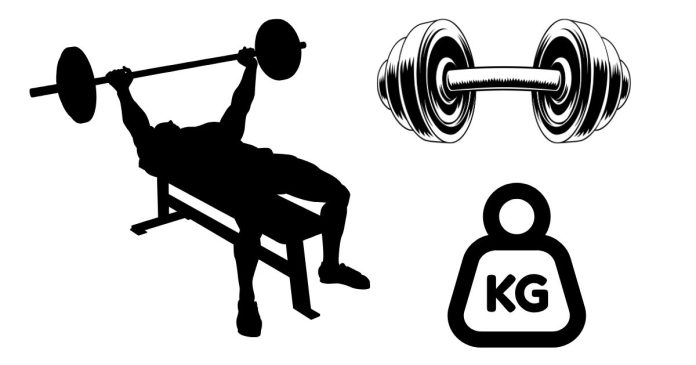When you first walk into a gym and see a Smith machine, you might think, “This looks like a straightforward way to lift weights.” But when you actually start using it, one common question arises: How much does the bar weigh on a Smith machine? Unlike a standard barbell, the bar on a Smith machine isn’t always uniform in weight due to its unique design and the assistance mechanisms it incorporates. In this blog post, we’ll break down everything you need to know about Smith machine bars, their weight, and how it impacts your workouts.
What is a Smith Machine?
The Smith machine is a weightlifting apparatus designed with a fixed barbell that slides vertically or slightly at an angle on guided rails. It’s a popular choice for performing exercises like squats, bench presses, and shoulder presses because the guided movement offers stability and safety. Unlike free weights, which require more balance and coordination, the Smith machine provides support, making it ideal for beginners or those looking to isolate specific muscle groups.
How Much Does the Bar Weigh on a Smith Machine?
The weight of a Smith machine bar can vary depending on the manufacturer, model, and design. Here are the most common weights you’ll encounter:
1. Standard Smith Machine Bar
- Typical Weight: 15-25 pounds (7-11 kg)
- Many Smith machine bars are lighter than standard barbells (which weigh 45 pounds or 20.4 kg) because they are counterbalanced by weights or springs within the machine. This makes them easier to lift and control.
2. Counterbalanced Bars
- Typical Weight: 10-15 pounds (4.5-7 kg)
- Some Smith machines use counterweights to reduce the starting weight of the bar even further, making it feel nearly weightless. This design is particularly common in commercial gyms and is aimed at accommodating beginners or those rehabbing from injuries.
3. Commercial-Grade Smith Machines
- Typical Weight: 20-30 pounds (9-13.6 kg)
- High-quality, commercial-grade Smith machines often have slightly heavier bars because they are designed to handle more weight and rigorous use.
4. Angled Smith Machines
- Typical Weight: Varies
- Some Smith machines have a slight incline to their rails, which can influence the perceived weight of the bar due to gravitational differences. However, the actual bar weight is usually marked on the machine or provided in the user manual.
How to Determine the Bar’s Weight on Your Specific Machine
If you’re unsure about the weight of the bar on your gym’s Smith machine, here are some ways to find out:
- Check the Machine Label:
Many gyms include a label or placard on the Smith machine that specifies the bar’s weight. - Ask a Trainer or Gym Staff:
Gym employees are often familiar with their equipment and can provide you with the bar’s weight. - Consult the Manufacturer’s Manual:
If you have access to the machine’s user manual or can find the manufacturer’s specifications online, you’ll likely find the bar weight listed there. - Weigh the Bar Yourself:
If you have access to a scale, you can remove the bar (if possible) and weigh it. Keep in mind that not all Smith machine bars are removable.
Why Does the Bar Weight Matter?
Understanding the weight of the bar on a Smith machine is essential for tracking your progress and ensuring your workout program is effective. Here’s why:
1. Accuracy in Weightlifting Logs
If you’re tracking your lifts, knowing the exact weight of the bar is crucial for consistency. For example, if you squat with a 25-pound Smith machine bar but switch to a 45-pound standard barbell, it will affect your performance and progress tracking.
2. Program Adjustments
Different bar weights can influence your perceived effort. A lighter bar might allow you to lift heavier plates, while a heavier bar requires more strength upfront.
3. Progression and Overload
Progressive overload—gradually increasing the weight you lift—is key to building strength and muscle. Knowing the bar’s weight helps you accurately calculate the total weight you’re lifting.
Advantages and Limitations of the Smith Machine
Advantages:
- Stability: The guided movement eliminates the need for balance, making it great for beginners.
- Safety: Built-in safety stoppers reduce the risk of injury, especially during heavy lifts.
- Isolation: Helps focus on specific muscle groups without the involvement of stabilizing muscles.
Limitations:
- Limited Range of Motion: The fixed path can feel unnatural for some exercises, particularly squats.
- Less Activation of Stabilizer Muscles: Free weights engage more stabilizing muscles, leading to greater functional strength.
- Weight Misconceptions: The counterbalanced bar can give a false sense of lifting heavier weights.
Smith Machine vs. Free Weights: Which Should You Use?
Both Smith machines and free weights have their place in a well-rounded fitness routine.
- Use a Smith Machine If:
- You’re new to weightlifting.
- You’re recovering from an injury and need more control.
- You want to focus on isolating specific muscles.
- Use Free Weights If:
- You want to build functional strength.
- You’re comfortable managing balance and coordination.
- You prefer a more natural range of motion.
Conclusion: Know Your Bar Weight
The weight of the bar on a Smith machine is a detail that can impact your workout routine, but it’s often overlooked. While most bars weigh between 15 and 25 pounds, counterbalanced machines can be significantly lighter. Taking the time to learn the specifics of your gym’s Smith machine will ensure you can train effectively and track your progress accurately.
So, next time you step up to the Smith machine, ask yourself: How much does this bar weigh? The answer could make all the difference in your fitness journey!



